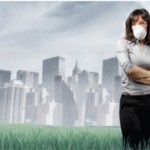Dr. Kronzer would also like to explore how microplastic exposure affects patients with RA.
Implications
Dr. Kronzer suggests rheumatologists delve into patients’ histories to see who is at risk for RA or RA-related diseases on the basis of environmental risk factors. She recalls working with a resident who thought a patient with new joint pain did not have RA. However, she was able to diagnose the patient with it, knowing that, like many military veterans, the patient had been exposed to burn pits.
“We need to be counseling patients that environmental exposures can increase their risk for the [RA] lung disease complication, as well as [disease] flares. It may be more important for them than other people to avoid pollution exposures. And we also need to be aware of the higher likelihood of having a flare—as opposed to other things that mimic flares—during times of high pollutant burden,” she adds.
Patients already diagnosed with RA should consider staying indoors if they are in areas with high levels of pollution and wearing a mask if they must go out, she advises.
Deborah Levenson is a writer and editor based in College Park, Md.
References
- Kronzer VL, Yang Y, Roul P, et al. Associations of fire smoke and other pollutants with incident rheumatoid arthritis and rheumatoid arthritis-associated interstitial lung disease. Arthritis Rheumatol. 2025 July;77(7):808–816.
- Miller F. Environment, lifestyles, and climate change: The many nongenetic contributors to the long and winding road to autoimmune diseases. Arthritis Care Res (Hoboken). 2025 Jan;77(1):3–11.
- Hart JE, Källberg H, Laden F, et al. Ambient air pollution exposures and risk of rheumatoid arthritis: Results from the Swedish EIRA case-control study. Ann Rheum Dis. 2013 Jun;72(6):888–894.
- Park JS, Cho S, Kim K, et al. Association of particulate matter with autoimmune rheumatic diseases among adults in South Korea. Rheumatology (Oxford). Nov 3;60(11):5117–5126.


